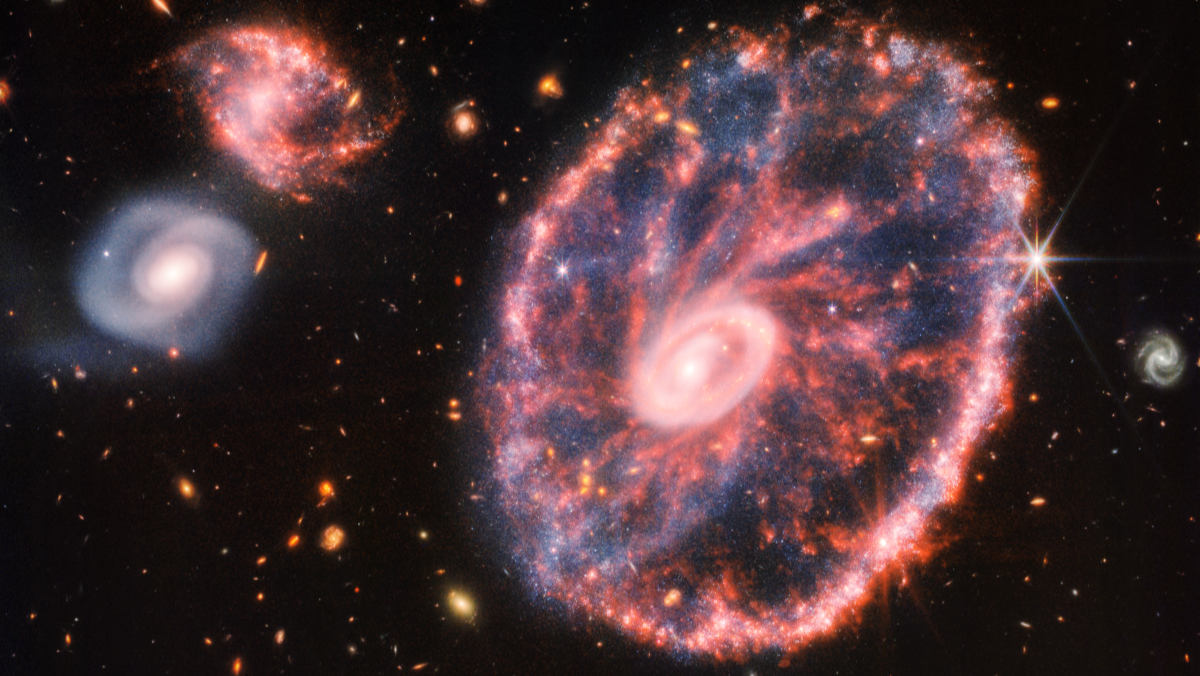New photos from the James Webb Space Telescope show the Cartwheel Galaxy in all its sparkly, dusty glory. Only weeks after NASA revealed the the first batch of images, these new images continue to unlock the universe’s beauty in a new (infrared) light. The variety of galaxies in the stunning shot are sure to make their way into science fiction soon. We can imagine these in any Star Trek episode.
The Cartwheel Galaxy is 500 million light years away. Its 150,000 lightyear diameter is larger than the Milky Way’s 100,000. But it’s a ring galaxy instead of a spiral galaxy, like the others in the photo and our own. The details are mesmerizing, especially the spokes of the wheel connecting the inner and outer rings.

The interesting shape of the Cartwheel Galaxy is the result of a collision between it and another galaxy. When a small galaxy passes through a larger one, stars rarely collide. But their gravitational pulls disrupt each other and, in this case, affect the structure of the whole galaxy. In the bright inner ring are clusters of young stars. The outer ring is a star nursery. As it expands and plows through space, new stars begin to form.
The image above is a composite of the two cameras the telescope uses. Below are the separate images. On the left, the near-infrared camera picks up stars even through all the space dust. On the right is the mid-infrared image, which helps classify the different types of dust. Notice how different the smaller galaxies look in this image. The different colors correspond to various wavelengths of light.
The Hubble Space Telescope previously photographed the Cartwheel Galaxy in visible light. Though it’s still beautiful, it includes fewer details and the deep field is sparsely populated. The James Webb Space Telescope picks up a remarkable amount of new information. We can’t wait to see more images!
Melissa is Nerdist’s science & technology staff writer. She also moderates “science of” panels at conventions and co-hosts Star Warsologies, a podcast about science and Star Wars. Follow her on Twitter @melissatruth.